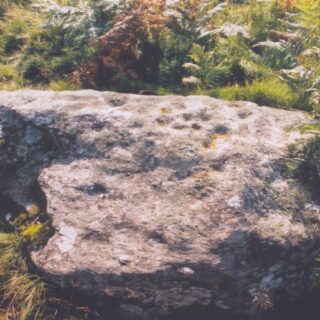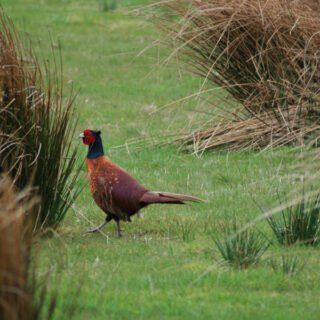This weekend was Doors Open Day, a fantastic annual event organised by the Cockburn Association where buildings not always open to the public open their doors for all to see and explore.
We started off close to home, visiting the architect-designed 1 West Annandale Street which is just around the corner from us. Converted from an old shop, it highlights the benefits of a thoughtfully-designed space, and features a triple-height central space reaching from a mezzanine office level down through the main living area to an excavated basement.

Just around the corner from that house is the Lothian Buses depot, which had numerous old buses on display, and various activities going on.
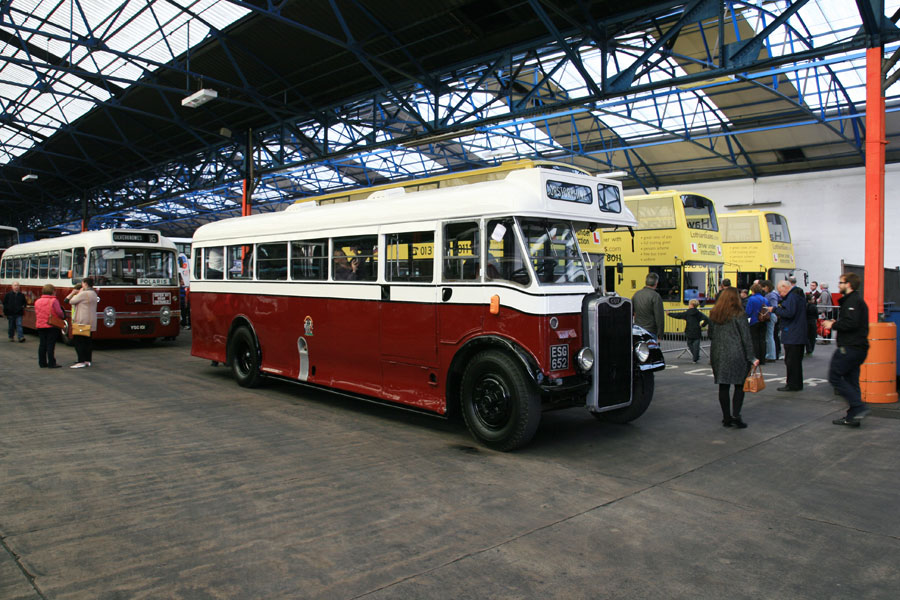
We then switched from east to west, making our way through the grand New Town streets to St Vincent Street and the offices of the architect Lorn Macneal, where they had various drawings and 3D models of their projects on display.
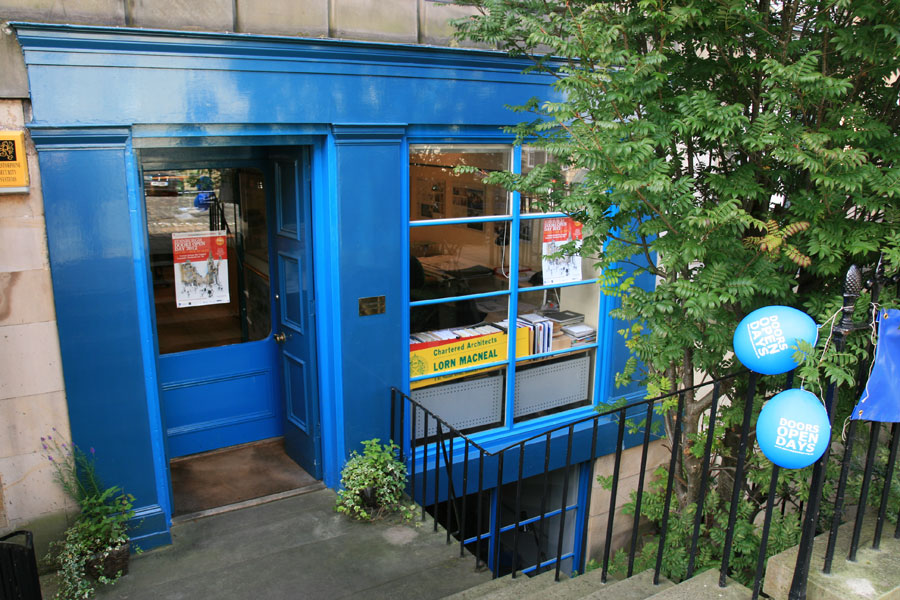
Next we walked up to the corner of Princes Street Gardens to St Cuthbert’s Church, a massive building that is strangely less prominent than it might be due to its slightly sunken position.
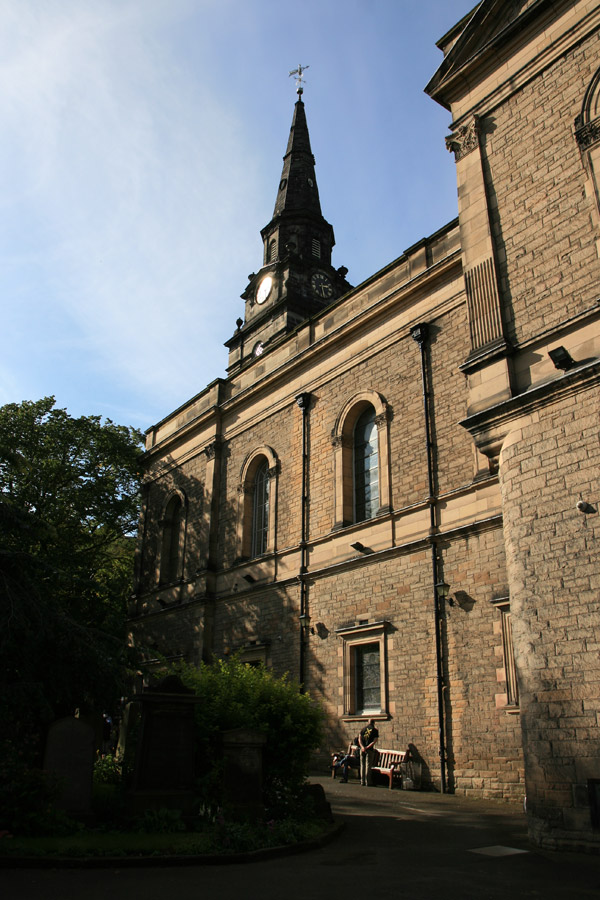
Within the church is a stained glass window depicting David and Goliath, which was created by Tiffany of New York in 1903, and is apparently one of only five Tiffany windows in Britain.
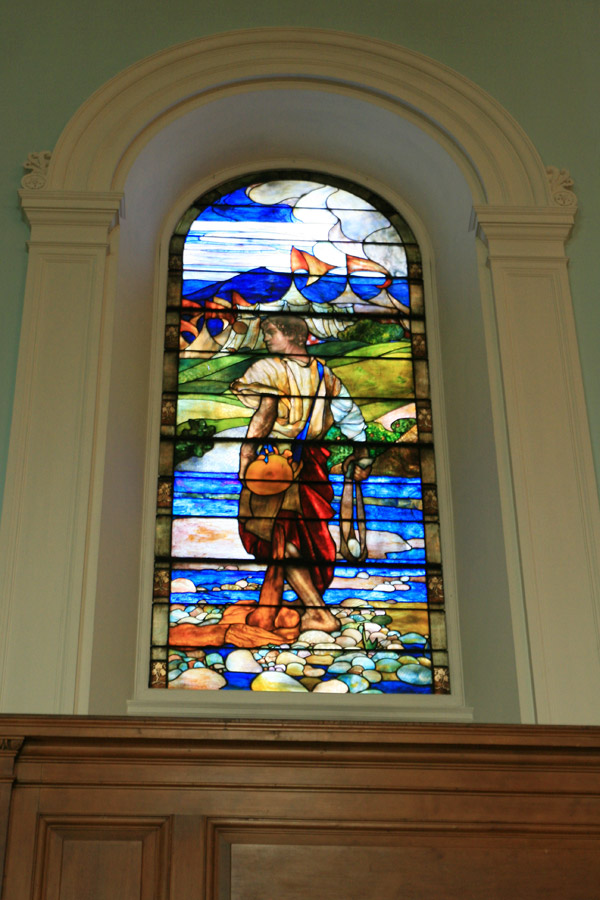
At the eastern end of the church on the curved wall of the apse is an alabaster version of Leonardo Da Vinci’s Last Supper.

There is also a bronze Mother and Child sculpture, a copy of Michelangelo’s marble “Bruges Madonna” statuette in Notre Dame Cathedral in Bruges.

We continued along Lothian Road to the next building on our hit list, the Usher Hall.

Built in 1914, it recently had a new glass entrance added to the south-west corner (if indeed a circular building can have a south-west corner!).

Once inside we were given free reign to wander around the building, including going on stage and behind the scenes.
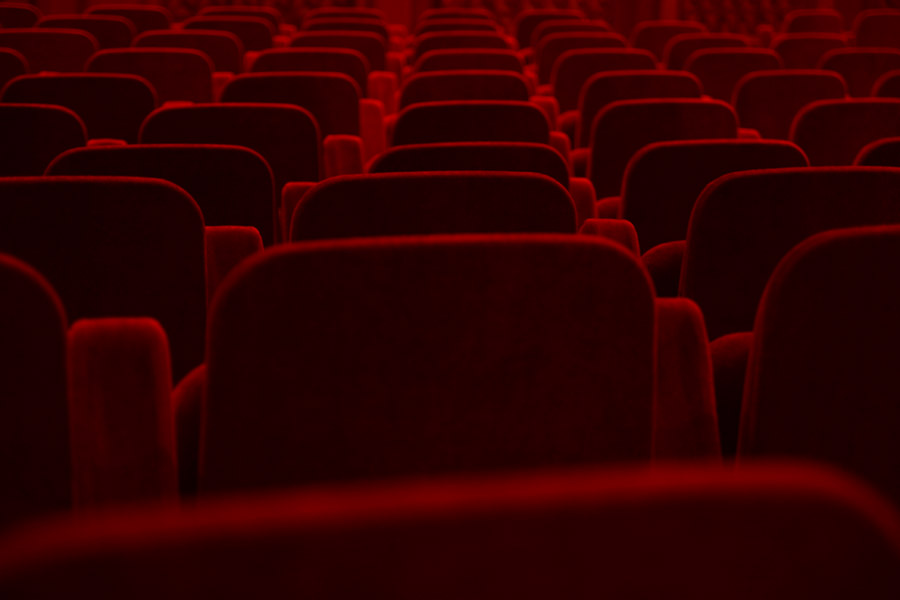
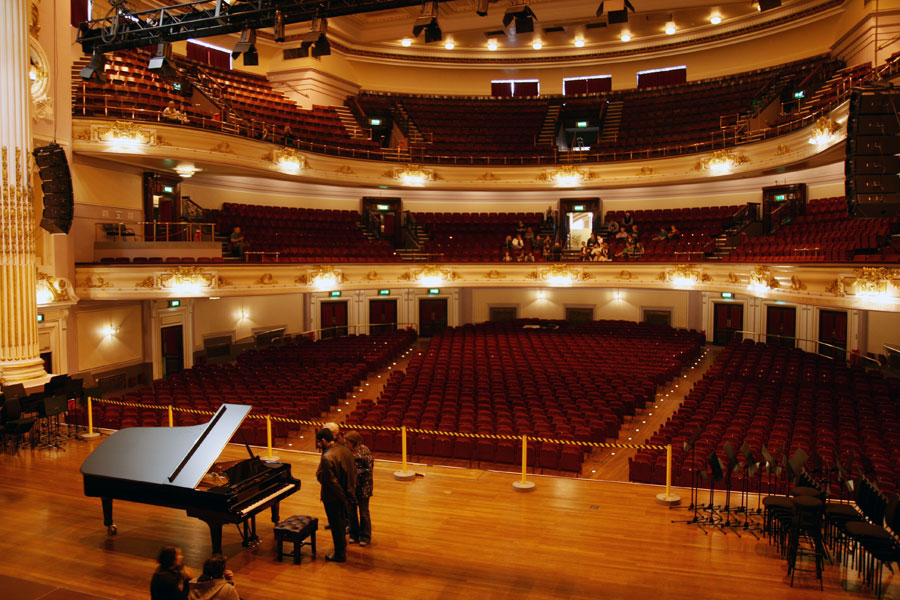
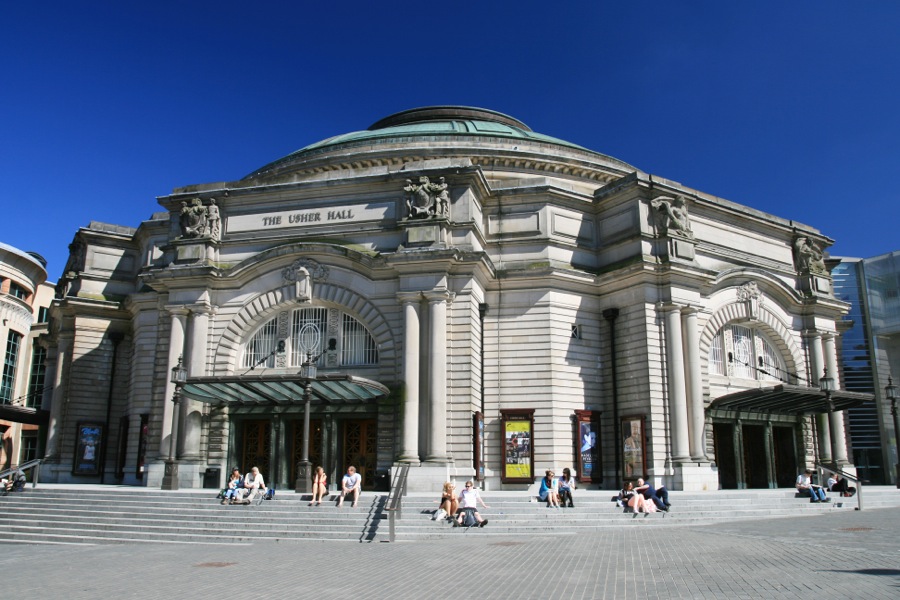

Back outside, we realised we were too late to get to George Heriot’s School before it closed (an inevitable but difficult part of Doors Open Day is prioritising on the move) so instead made our way up Johnston Terrace, with Edinburgh Castle rising high above us on the Castle Rock.
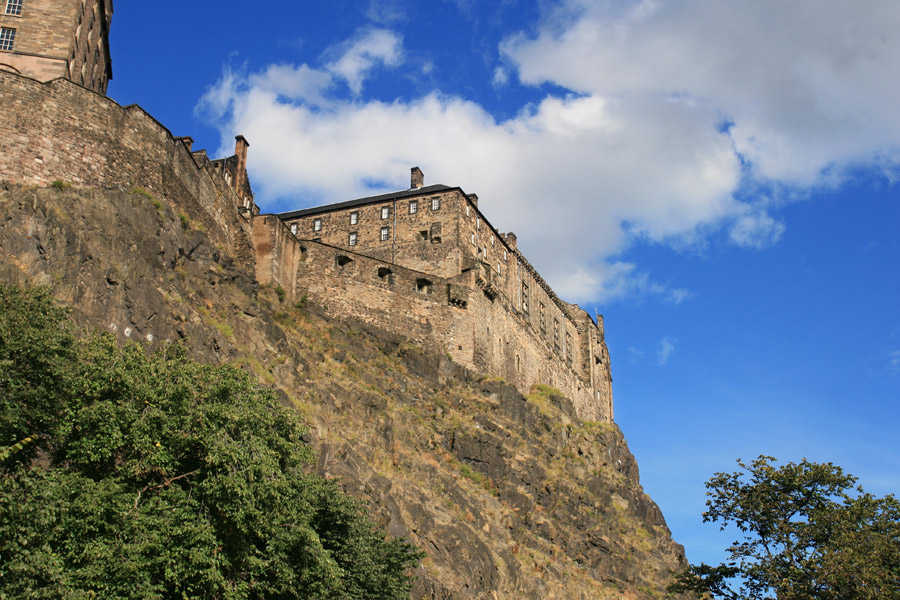
Another building on our list, Riddle’s Court, was also shut by now, so we continued on down the Royal Mile to Old Moray House, which was built around 1618 by Mary, the Countess of Home. It is one of the few remaining grand aristocratic buildings on the Canongate, and is now part of the University of Edinburgh.

Further still down the Royal Mile we went to the Scottish Parliament.

We had actually been here a couple of weeks ago, but this time the floor of the debating chamber was open to the public, giving us a slightly different perspective.

On the new concrete wall of the Parliament building is an old stone rescued from the old Scottish Parliament building that was built in 1639.
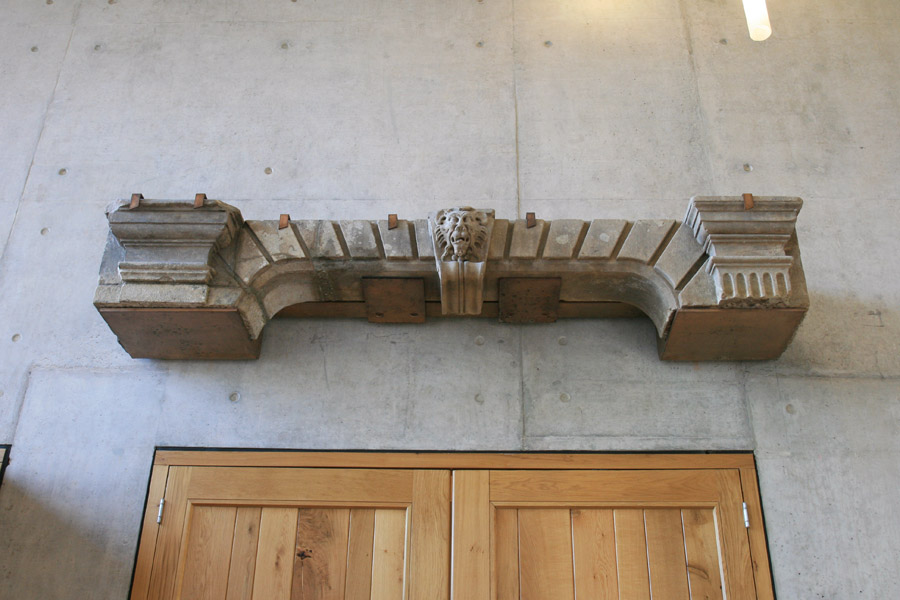
The main reason for returning to the Parliament so soon after our last visit was the opportunity to view part of Queensberry House.

Built in the 17th century and owned by the 1st Duke of Queensberry, it now creates an interesting juxtaposition between old and new architecture.


We set off back up the Royal Mile to Acheson House, built in 1633 by Sir Archibald Acheson of Glencairnie, the then Secretary of State.

Sir Archibald’s initials, along with those of his wife Margaret Hamilton, appear on carved pediments over the windows.
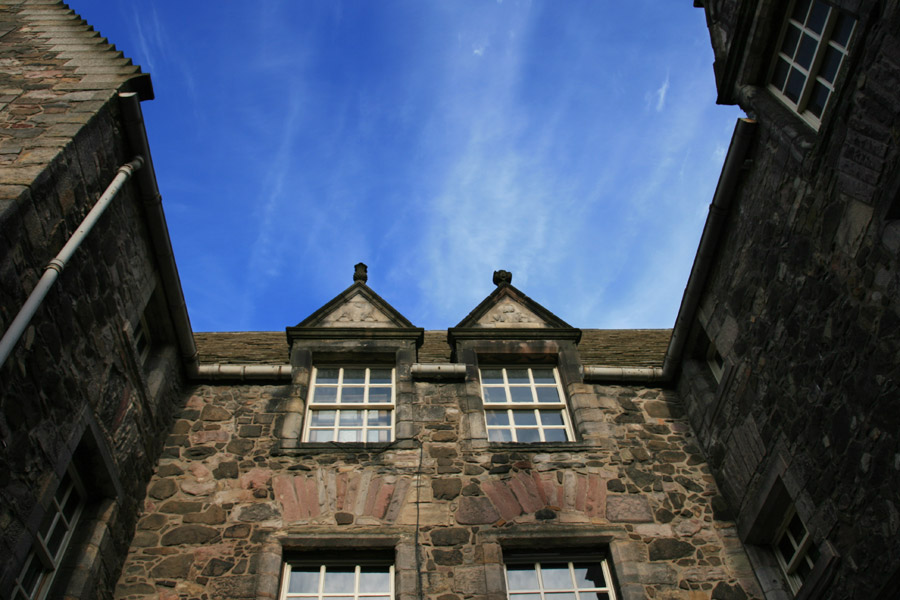
To the south of the house is a newly-restored walled garden, planted with the kinds of vegetables and medicinal herbs that would have been found in a 17th century garden.


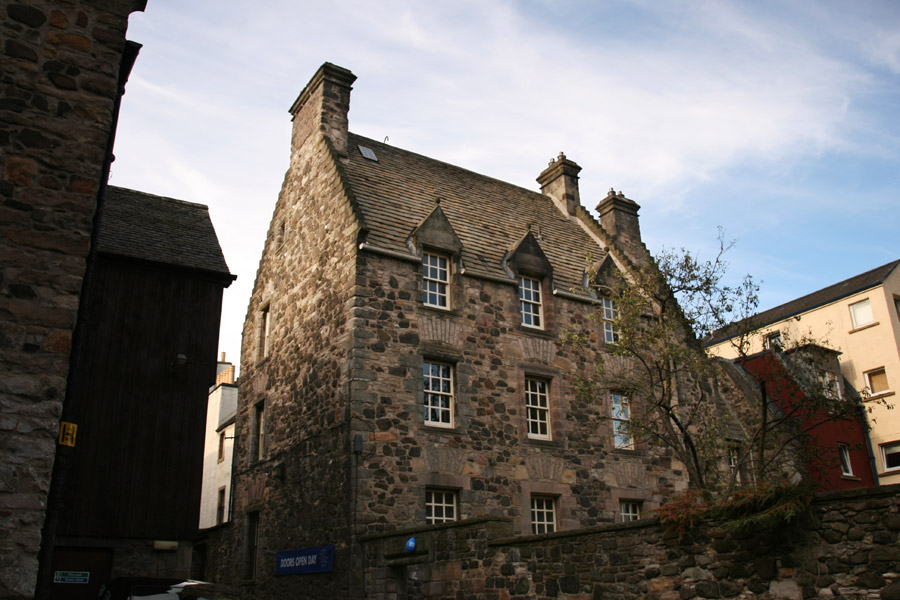
We continued our way back up the Royal Mile, nipping in to have a quick look at Chessel’s Court, an 18th century block of flats built by Archibald Chessel that wasn’t part of Doors Open Day.

The last visit for the day was Dovecot Studios, which I had failed to visit on a previous Doors Open Day after being put off by the queues. Luckily their were no queues this time, and we got to see the wonderful gallery and studio space created by converting an old swimming pool.

With all of the Doors Open Day doors now closed, we made our way to The Southern for beers and burgers.
It all started again on Sunday though, and again we were lucky to have our first visits close to home. The Mansfield Traquair Centre, formerly the Catholic Apostolic Church, is remarkable for containing a series of murals painted by Phoebe Anna Traquair in the 1890s.
,%20Edinburgh,%20Midlothian/IMG_2099.jpg)
,%20Edinburgh,%20Midlothian/IMG_2109.jpg)
,%20Edinburgh,%20Midlothian/IMG_2111.jpg)
,%20Edinburgh,%20Midlothian/IMG_2112.jpg)
Next on the list was another former church, this time Broughton Place Church which is now the Lyon & Turnbull auction house.
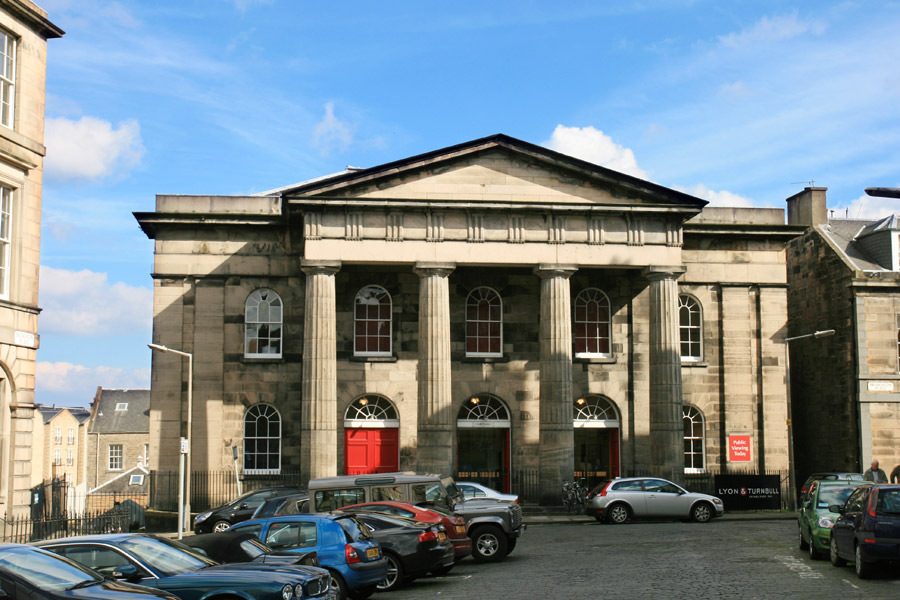
The main body of the old church was filled with artefacts from the the 2012 International Sale of Fine Antiques and Old Master Paintings.
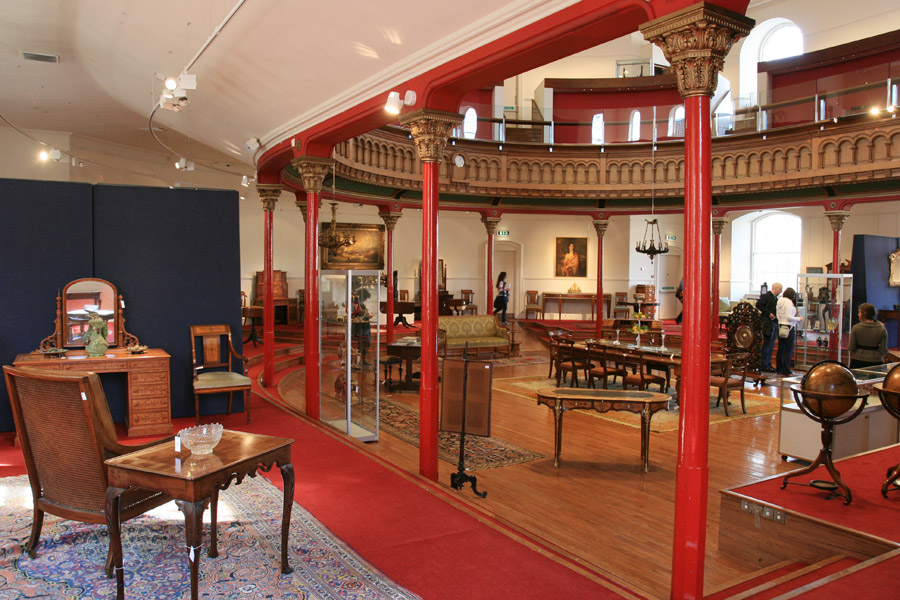

We continued up Broughton Street on our way into town, and made for the Old College on South Bridge. Designed by Robert Adam in 1789, last year its quadrangle was finally finished after a lengthy wait – finances ran out during construction in 1835 and the quadrangle wasn’t finished to the same levels of grandeur as the rest of the building.

Inside, another architectural heavyweight was responsible for creating imposing Greek revival interiors. William H Playfair designed what is now known as the Playfair Library in 1819, with eleven columned bays of books supporting an impressively long and grand coffered vaulted ceiling.
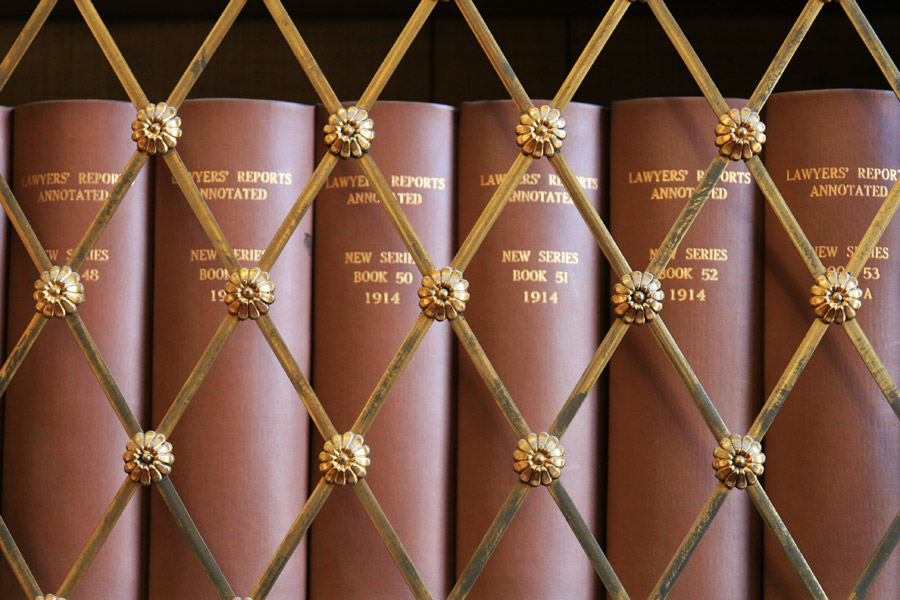
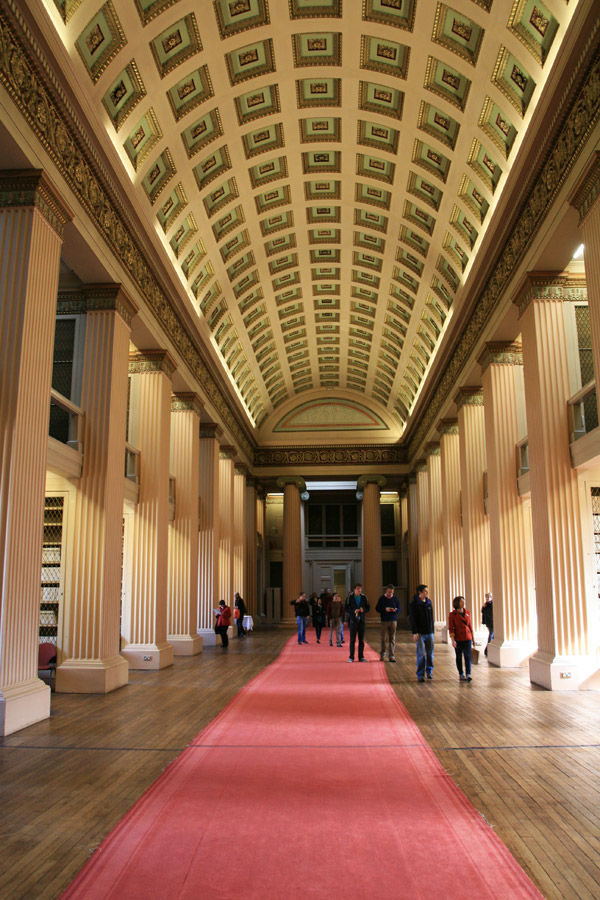

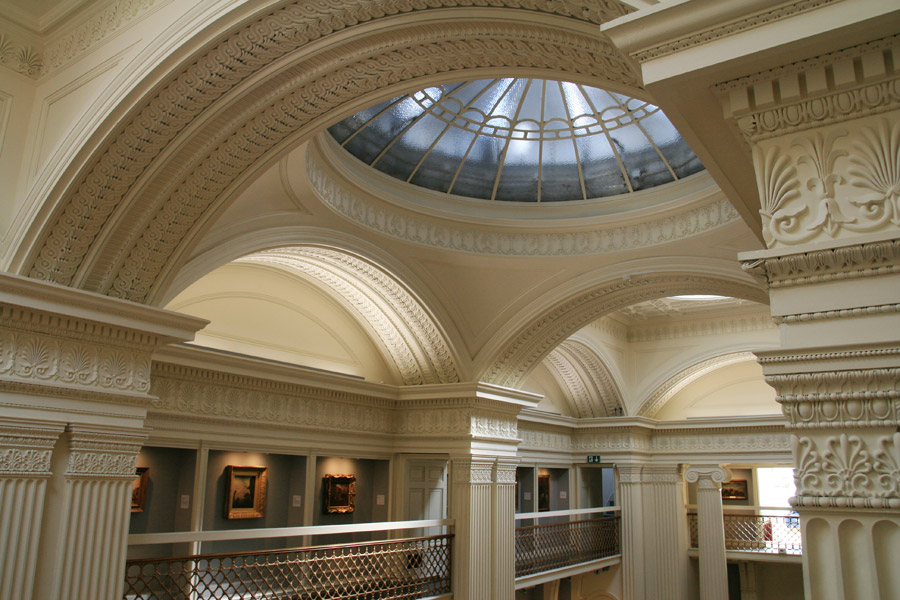
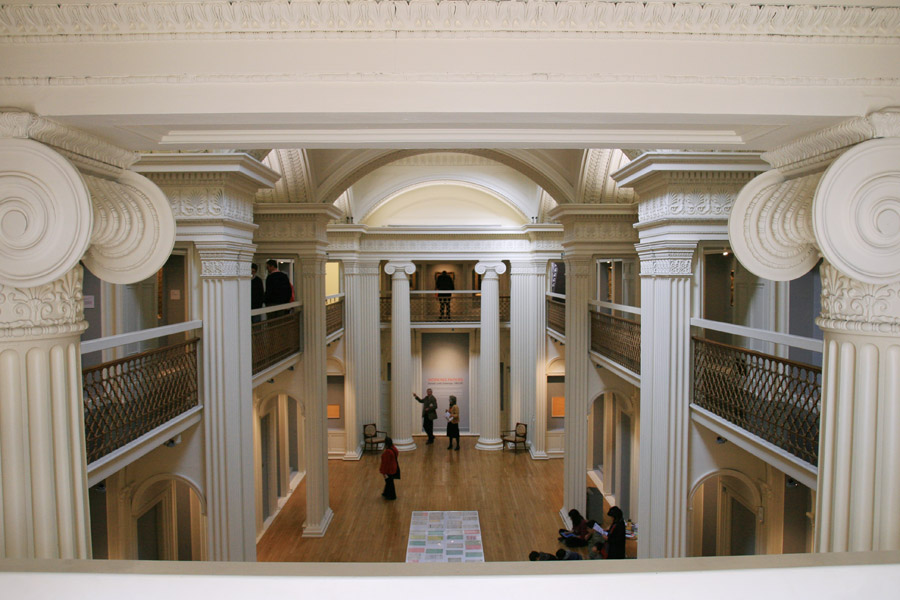
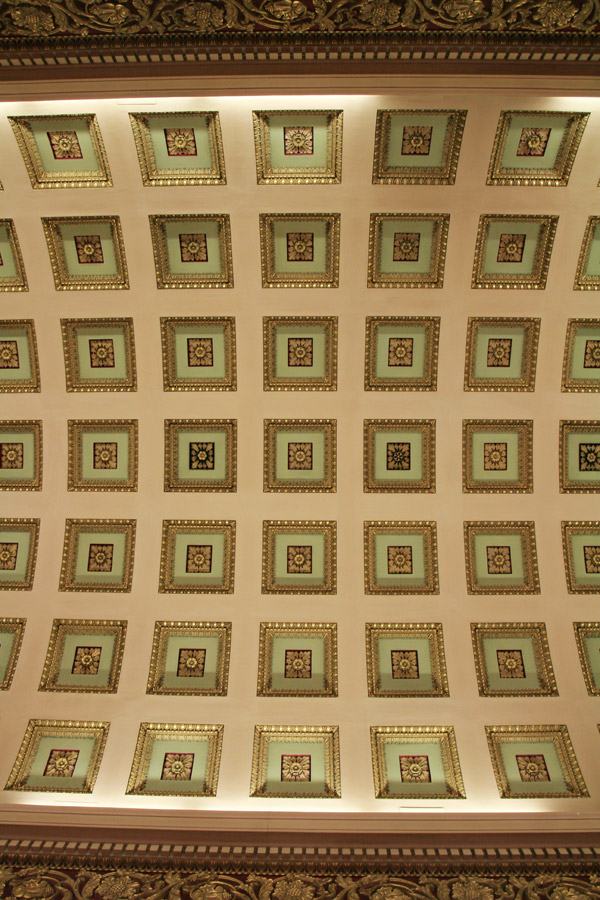
Next on the list was the building we were most interested in, Liberton Tower. We took a bus out to Liberton on the edge of the Braid Hills, a little oasis of countryside within the city. When we arrived we were told that there was a long queue, and it was looking unlikely that we would get in before they closed the doors for the weekend, but nevertheless we joined the queue hopefully.
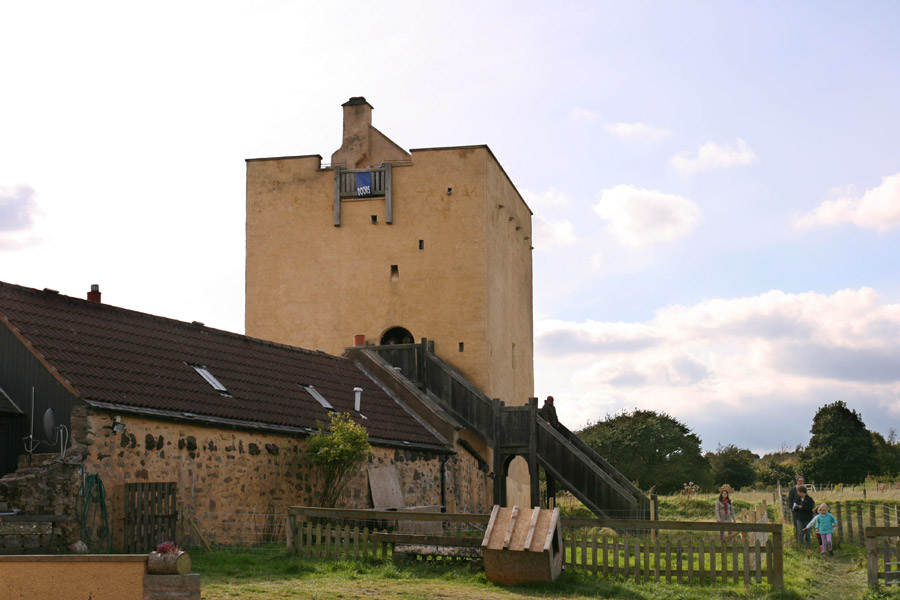
While waiting in the queue I took the opportunity to take some photos of Edinburgh sprawling out in front of us, and I made a panorama.

After a bit of a wait we luckily made it in to the tower before the cut off point! A wooden external staircase leads up to the entrance on the first floor.

This leads directly into the main hall, from which there are staircases up and down to the other levels.

The owner of the tower gave an informative talk on the history of this 15th century castle, which is now rented out as holiday accommodation.

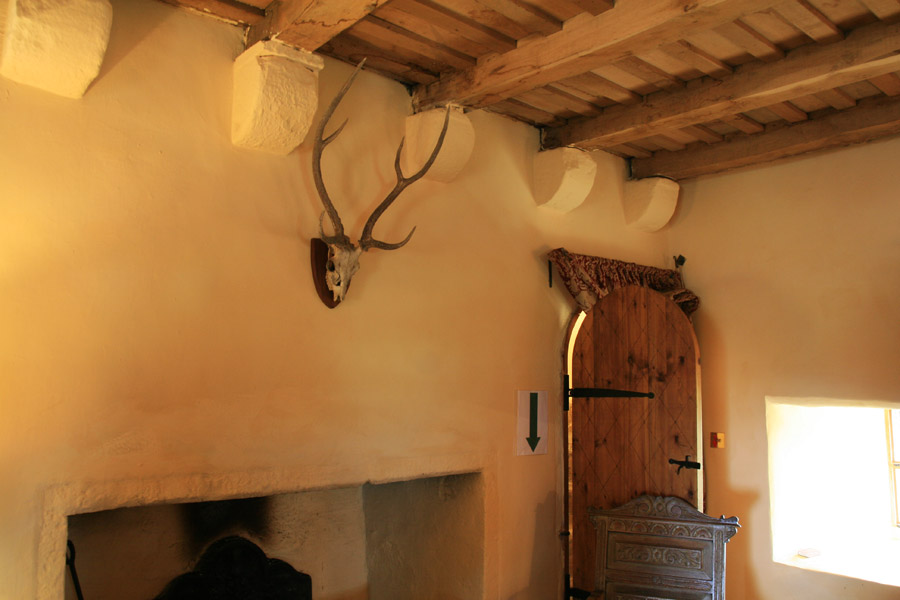
After which we made our way up the narrow staircase to the next floor, where there is access out onto the roof via a ladder in one of the two bedrooms.

The other bedroom features a four poster bed.

Once out onto the roof, the view was superb. The importance of the location of the tower was clear from up here, with Edinburgh Castle, Craigmillar Castle and North Berwick all visible, and Arthur’s Seat of course .

After getting a bus back into town we still had time to visit the latest opening Doors Open Day property. Built as a house in 1876, it was remodelled in 1883 for the owner of The Scotsman newspaper John Ritchie Findlay, and is now run as a boutique bed and breakfast called B+B Edinburgh.

The grand interiors are full of carved wood details and heavy fireplaces.


A balcony on the first floor has great views over Well Court in Dean Village below. Well Court was commissioned as a philanthropic project by Findlay, and at the same time as improving the lives of its residents, also no doubt improved Findlay’s view!
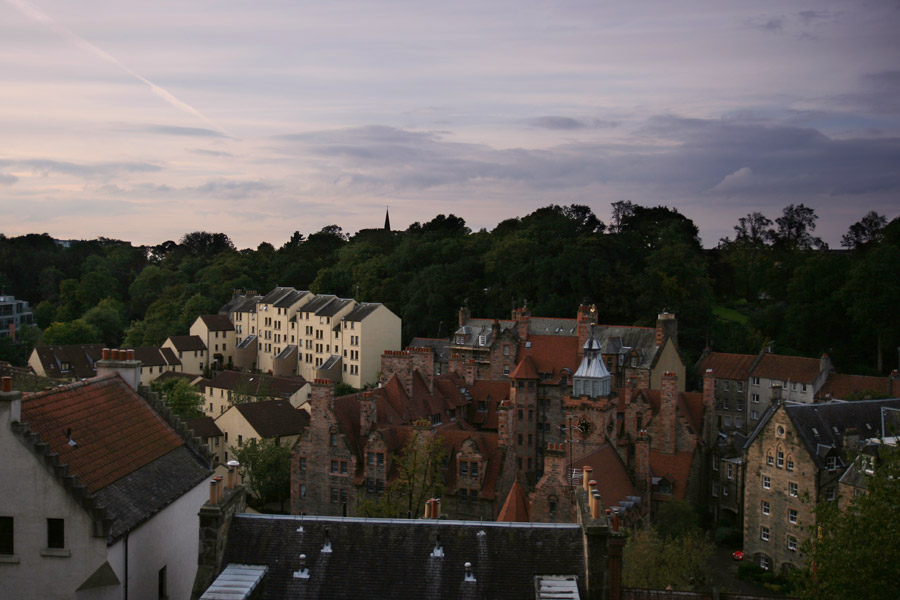
The house has been sympathetically-converted to a bed and breakfast, and the snug library looks like a great place to sit and enjoy a coffee or whisky.
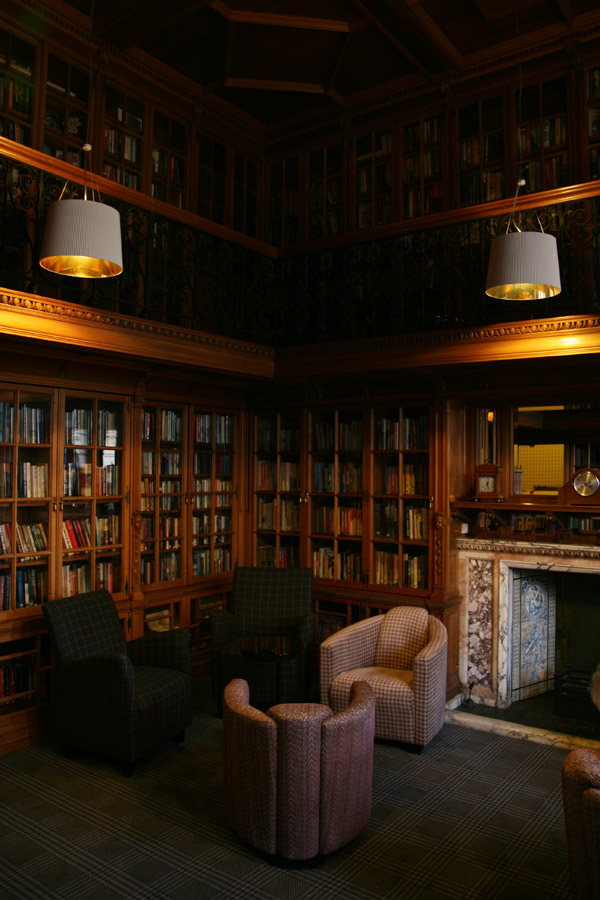
We made do with coffee and cake at Indigo Yard instead – less grand but very tasty – before heading for home.

